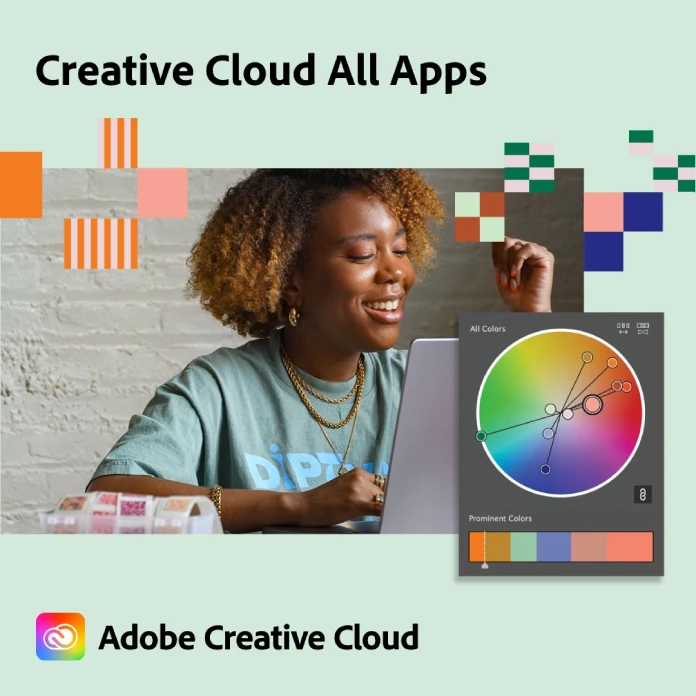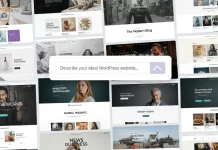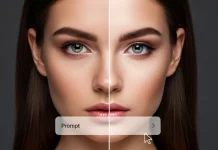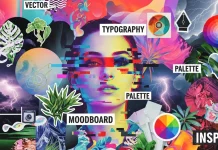This post contains affiliate links. We may earn a commission if you click on them and make a purchase. It’s at no extra cost to you and helps us run this site. Thanks for your support!
Realistic imagery matters more than ever as digital audiences expect believable photos, clips, and even avatars. Adobe Firefly, now unified as a single generative‑AI platform, supports image, video, audio, and vector creation. In April 2025, Adobe unveiled Image Model 4 and the Firefly Video Model; by July 2025, Firefly expanded with advanced video controls, partner models, and bulk editing. This article explains why these updates are timely and how creative professionals can use them to generate believable content. It draws on the most recent information as of August 1, 2025, so you can trust its relevance [helpx.adobe.com].
What Adobe Firefly offers creators – a quick overview
Firefly is Adobe’s commercially safe generative‑AI platform within Creative Cloud. Users can create images, videos, text effects, and even vectors from natural language prompts. Firefly attaches content credentials, ensuring transparency about the model used and whether AI helped create the work. Partner models from Google, OpenAI, Flux, and Runway now sit alongside Adobe’s engines. Paid plans grant more generative credits, and the mobile app (beta) lets you create on iOS or Android, syncing with your desktop projects. Firefly Boards, introduced in June 2025, provides a collaborative canvas for mood boards and ideation.
Why realism is a priority
Clients and audiences recognize the difference between stylised art and a believable scene. Social campaigns, marketing materials, and concept art often demand photos and videos that feel authentic. Adobe Firefly’s latest models improve prompt fidelity, structure control, and resolution. They render people, animals, and architecture with greater accuracy and even allow you to specify camera angles and zooms. The July 2025 video update also tackles motion coherence – an essential step for believable animation.
Image Model 4 and Image Model 4 Ultra – photorealism unlocked
How the new models differ
Image Model 4, released in April 2025, offers lifelike image quality, more creative control over structure and style, and the ability to generate outputs up to 2K resolution. It is designed for rapid ideation, producing high‑quality images quickly for illustrations, icons, and everyday creative needs. Image Model 4 Ultra goes further: it excels at photorealistic scenes, human portraits, and small groups with natural detail. Adobe calls Image Model 4 the fastest, most controllable, and most realistic Firefly model yet. For advanced use cases, the two models give professionals a choice between speed and extreme realism [blog.adobe.com].
Best practices for realistic image generation
Using Firefly well depends on the quality of your prompts. Adobe’s guidelines advise you to be specific – use at least three words and avoid vague terms like “generate”. Include a subject, descriptive adjectives, and contextual keywords. Being descriptive improves alignment with your vision: details about characters, environments, and lighting lead to better results. Adding originality through feeling, style, and lighting helps stand out. Consider empathy: prompts that reflect emotion make images more engaging. Finally, Adobe Firefly is part of Creative Cloud – after generation, use Generative Fill, Expand, and other Photoshop tools to refine your images, crop or replace backgrounds, and color‑grade multiple files at once.
Use reference images and style controls
Image Model 4 gives you options to set aspect ratio, content type, and style presets. You can match composition to a reference image, apply aesthetic filters, or use 3D scenes as guides. Partner models such as GPT Image, Flux 1.1 Pro, and Ideogram 3 provide alternative aesthetics; each uses different credit rates. Choose Adobe models when you need licensed, commercially safe results; switch to partner models when exploring stylized or experimental looks.
Vector and partner‑model innovations
Adobe Firefly now offers text‑to‑vector capabilities. You can transform prompts into scalable, editable vector graphics for logos, icons, or packaging. Because vectors are clean and resolution‑independent, they integrate well with design workflows. Partner models integrated in July 2025 include Google’s Veo 3, Runway’s Gen‑4, Topaz upscalers, and Moonvalley’s Marey. Firefly Boards allows you to select from these models and compare outputs on a canvas. Choose a model based on the look you need: Veo for cinematic motion blur, Gen‑4 for stylized animations, Topaz for upscaling, or Flux for graphic illustrations. Content credentials still accompany partner‑model outputs, but check each provider’s terms before commercial use.
Video generation in 2025 – new controls and smoother motion
Motion fidelity and composition reference
The July 2025 Firefly video update tackles the biggest complaint: jerky motion. Adobe’s upgraded video model produces smoother transitions; snow particles or an octopus now animate with fewer frame‑to‑frame jumps. While clips remain short and compressed, this improvement makes storyboards and previews feel more believable. The new Composition Reference workflow allows you to upload a base clip and have Firefly replicate its framing or camera movement with entirely new content. This is valuable for cinematographers and storyboard artists; they can modify time of day, set dressing, or weather while preserving motion vectors.
Style presets and keyframe cropping
Firefly’s advanced video controls include style presets such as claymation, anime, and line‑art, allowing quick exploration of looks. Keyframe cropping uses your uploaded first and last frames to automatically reframe videos for vertical, square, or horizontal formats. These features speed up social‑media deliverables without manual pan‑and‑scan editing. They also illustrate how Adobe Firefly can adopt cinematic aesthetics or preserve composition across aspect ratios.
Generative sound effects and avatars
Firefly’s July update introduces Generate Sound Effects (beta). You can type a description like “hissing steam valve” or record a rhythm; Firefly layers a corresponding audio clip onto your video. Although outputs are stereo and somewhat cartoonish, this tool adds atmosphere quickly. Text to Avatar (beta) converts scripts into talking‑head videos with stock avatars and adjustable accents. Use it for explainer videos or training content, but remember that current avatars remain limited and cannot match professional presenters.
Third‑party video models and prompt enhancements
A major change is Firefly’s integration of third‑party video models. You can now choose Google Veo 3 and Runway Gen‑4 for video generation, plus Luma’s Ray 2 and Pika 2.2** (coming later). Partner models bring diverse aesthetics and motion characteristics. Adobe Firefly also includes an Enhance Prompt tool that rewrites vague user instructions into more specific language before generation. Finished clips can be exported directly to Adobe Express or Premiere Pro, streamlining your workflow.
Best practices for video prompts
Clear, descriptive prompts remain the key to realistic videos. Adobe suggests using as many words as necessary to describe lighting, cinematography, color grade, mood, and aesthetic style [helpx.adobe.com]. A recommended structure is: Shot Type Description + Character + Action + Location + Aesthetic. For example, specify the camera perspective (close‑up, wide shot), the character’s appearance and emotion, the action they perform, the environment, and the cinematic feel. Limit prompts to four subjects to avoid confusion. Being explicit about the visual tone (realistic, cinematic, animated, or artistic) helps Firefly meet your expectations. Define actions with dynamic verbs and adverbs, use descriptive adjectives to set the atmosphere, and provide backstory when needed. You can even direct camera movements – pan, zoom, aerial, or low‑angle shots – to achieve a personalized look. Include temporal elements such as time of day or weather to influence mood. Finally, iterate: start with a basic prompt and refine it through successive generations.
Bulk editing, mobile workflows, and creative production
The July 2025 update also introduces productivity tools. Adobe Firefly can resize multiple images simultaneously, keeping focal points sharp and using generative expansion to fill empty spaces. It can reframe multiple videos to new aspect ratios, crop or color‑grade thousands of images at once, and remove or replace backgrounds across a batch. Firefly Boards (beta) integrates partner models and allows teams to organize images, videos, and documents on an infinite canvas. The Firefly mobile app, released in June 2025, lets you generate images and videos on the go. All creations sync with your Creative Cloud account for seamless transition between devices.
What makes Firefly so useful for designers and filmmakers
Firefly’s generative models accelerate concept exploration. Designers can quickly test compositions, moods, and styles before committing to a photoshoot or set build. Marketers gain near‑instant social content that matches brand aesthetics. Motion fidelity and composition reference shorten previsualisation cycles for filmmakers. However, Firefly is a tool, not a replacement for craft. AI‑generated images and videos still require human oversight to meet professional standards. High‑resolution capture, dynamic range management, and lighting nuance remain the domain of artists and cinematographers. Ethical considerations also matter: users must verify that partner models are appropriate for their projects and respect licensing conditions.
Practical tips to maximize Adobe Firefly’s realism
- Focus your prompts. Start with clear, specific descriptions; refine them iteratively until the output matches your vision.
- Control composition and style. Use reference images, specify shot types, and choose style presets to match your desired look.
- Leverage partner models. Experiment with Veo, Gen‑4, or Flux when you need alternative aesthetics or more dynamic motion.
- Combine AI with manual editing. After generating, refine results in Photoshop, Lightroom, or Premiere Pro; adjust color grading and retouch details.
- Use bulk tools wisely. Batch resizing, reformatting, and color‑grading help maintain consistency across campaigns; use generative expand to fill missing areas.
- Check content credentials. Always review the attached metadata to know which model created your output and ensure commercial safety.
- Stay updated. Adobe regularly adds new models and features; being early to adopt them gives you creative advantages.
The future of AI‑assisted creativity
Adobe Firefly shows how quickly generative AI is moving toward believable images and videos. Image Model 4 and its Ultra variant push photorealism, while the July 2025 video update improves motion and introduces tools for composition, style, and sound. As partner models expand, creators will gain even more diversity in aesthetics and storytelling. Yet the human element remains essential: designers and filmmakers must guide AI with clear intent, refine outputs, and uphold ethical standards. Mastering Firefly’s latest features now will prepare you for even more sophisticated AI tools on the horizon.
Don’t hesitate to browse WE AND THE COLOR’s AI and Technology categories to stay up to date with the latest news, trends, and updates.

















